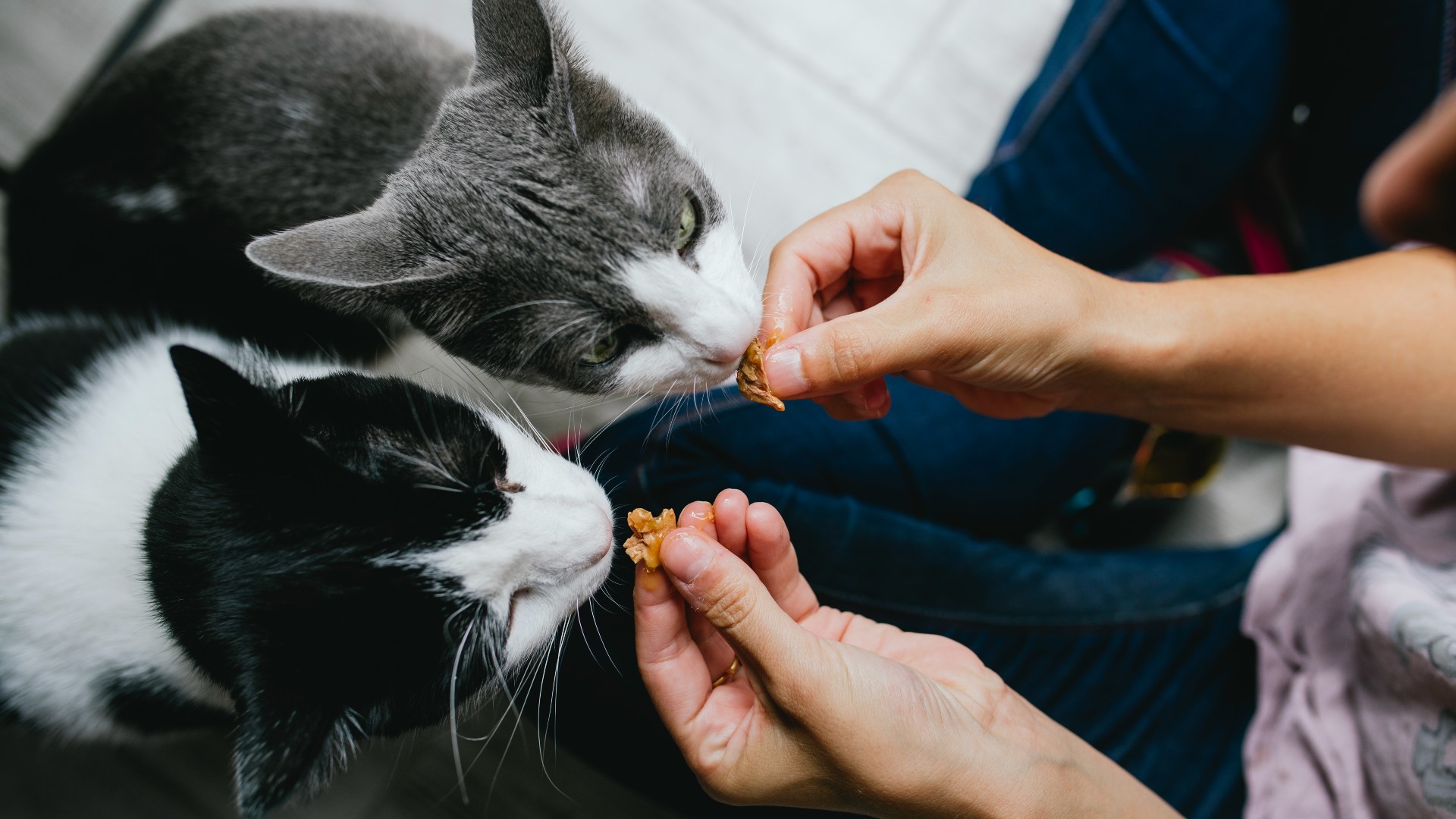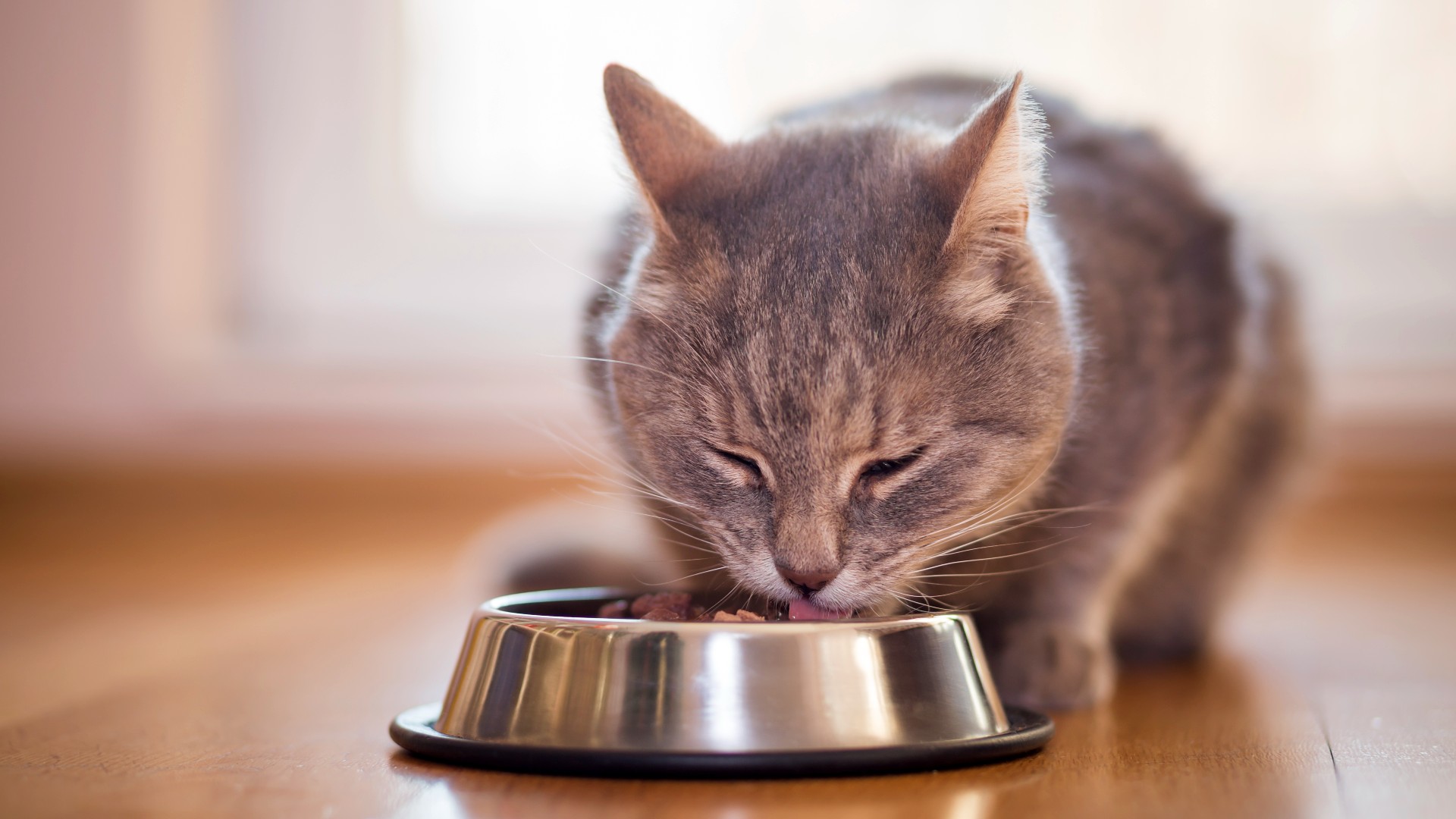Freeze-dried cat food: What are the benefits and how do you prepare it?
Rich in nutrients and robust in flavour, freeze-dried cat food offers a host of benefits. Here's everything you need to know...

Alongside raw and dehydrated foods, freeze-dried cat food has seen a huge surge in popularity in recent years as more and more pet parents look for healthier alternatives to the many commercial cat food options lining the grocery store shelves.
While the best dry cat food and the best wet cat food far outsells freeze-dried options, there has certainly been a substantial increase in interest when it comes to alternative food options. Freeze-dried foods are said to contain more nutrients, zero preservatives and additives, and similar benefits to a raw food diet.
But before you go clearing your pantry shelves of the best cat food dishes that your feline friend knows and loves, it’s important to understand both the pros and cons of freeze-dried cat food so that you can ensure you’re making the right choice for your fur baby.
While there are advantages to freeze-dried foods, commercial brands are carefully designed to be nutritionally complete and balanced, so before making any changes to your little ones diet, we recommend that you talk things through with your vet, who will be able to offer advice and guidance.
To help you and your kitty get started on this potential new food path, we’ve done a deep dive into freeze-dried cat food to bring you everything you need to know - including exactly what it is and how to prepare it correctly. Let’s check it out!
What is freeze-dried cat food?
When it comes to cat food, it can be easy to get confused between raw, dehydrated and freeze-dried, so to help make it easier to distinguish one from the other, we’re going to break each of them down for you.
Freeze-drying is when a food is frozen and then placed into a vacuum where the water is turned into a vapor. After that, the food is then sealed in air-tight packaging to make sure it’s completely moisture free before being shipped to your local grocery store.
Freeze-dried cat food is similar to raw cat food in that it hasn’t been cooked, but there are some key differences. Raw foods remain in their raw state, so they don’t have the moisture taken out of them and are therefore not shelf-stable. Raw foods may also lack key nutrients and they can carry a high bacterial and parasitic load.
Dehydrated cat food is a lot like freeze-dried cat food in that both have had the moisture removed from them, just using different techniques. Freeze-dried food is produced using cold temperatures whereas dehydrated food requires low heat and because of that, the former tends to retain more nutrients than the latter.
The benefits of freeze-dried cat food
Freeze-dried cat food is basically a blend of meats and vegetables that have gone through a freezing and drying process to allow the shelf life of fresh ingredients to be safely extended. These special blends allow you to provide your feline friend with nutritious cuts of meat that don’t contain any fillers of preservatives.
Alongside being free from fillers and preservatives, freeze-dried foods tend to be:
- Nutritionally complete and balanced
- High in protein
- Rich in vitamins, minerals, enzymes and antioxidants
- Grain free
- Great for cats with allergies
- Robust in flavor
Freeze-dried foods are also super convenient, travel well and have a stable shelf life. In addition, there’s also a school of thought that suggests that freeze-dried foods can offer the following health benefits:
- Whiter teeth
- Shinier coat
- Healthier digestion
- Smaller stools
- Fresher breath
- Stronger bones
If you’re looking for a formula that combines the benefits of raw food with those of dry kibble, freeze-dried cat food is well worth considering. Not only is it high in natural nutrition but it’s also easy to serve, making it a potential win-win for both you and your ball of fluff!
That being said, like with any form of cat food, there are always going to be some disadvantages to whatever dish you choose, so let’s take a look at the risks you need to be aware of before you switch your kitty over to freeze-dried food.
The risks of freeze-dried cat food

While the benefits of raw cat food in any form make it a serious contender for a spot in your feline friends food bowl, there are some genuine risks that need to be thought through.
The first of these is that freeze-dried cat food still carries with it the potential for bacterial contamination. While freeze-drying does help to decrease these pathogens, it doesn’t completely eradicate them as many can survive cold temperatures.
Surprisingly, while your cat can definitely get sick from ingesting bacteria and parasites, these pathogens actually pose a greater risk to you than they do to your feline friend. Your cat licking you or rubbing up against you can cause you to come into contact with their saliva, which, if contaminated, can cause you to become unwell.
Another risk posed by freeze-dried cat food is the possibility of nutritional deficiencies. Unless you’re working closely with a vet or nutritionist, imbalances in your cats diet may occur and this can lead to serious health problems.
If you do decide to opt for a freeze-dried food, check the label to make sure it clearly states that the dish is complete and balanced. Many freeze-dried foods are designed to be used as treats or as toppers for wet food or kibble, so it’s really important that you know how the product is meant to be used.
Finally, freeze dried food may not be suitable for cats with underlying medical conditions, such as diabetes and autoimmune conditions, and it’s not recommended to be used in homes where there are immune-compromised humans due to the risk of foodborne illness.
How to prepare freeze-dried cat food
When it comes to preparing freeze-dried cat food, it couldn’t be easier, which as a busy pet parent is likely music to your ears. Freeze-dried raw-coated kibble doesn’t require any rehydration, but other freeze-dried products will require a quick dip in some water to make them edible.
We recommend that you also follow the same safety precautions that you’d take if you were working with raw cat food - so, wash your hands to avoid becoming infected with any potentially harmful bacteria and clean and disinfect any surfaces that the freeze-dried food has touched.
As mentioned earlier, some freeze-dried cat food if it’s marked nutritionally complete and balanced can be served up on its own, while others are suitable as a replacement for the best cat treats or can be used as a topper for wet or dry food. Check the label for guidance and if in doubt, speak with your vet.
Not sure that freeze-dried food is right for your fur friend? Our guide to ‘is homemade cat food better than store bought?’ will help you decide whether preparing your cat’s meals from scratch is a better alternative.
PetsRadar Newsletter
Get the best advice, tips and top tech for your beloved Pets

Kathryn is a freelance writer who has been a member of the PetsRadar family since it launched in 2020. Highly experienced in her field, she's driven by a desire to provide pet parents with accurate, timely, and informative content that enables them to provide their fur friends with everything they need to thrive. Kathryn works closely with vets and trainers to ensure all articles offer the most up-to-date information across a range of pet-related fields, from insights into health and behavior issues to tips on products and training. When she’s not busy crafting the perfect sentence for her features, buying guides and news pieces, she can be found hanging out with her family (which includes one super sassy cat), drinking copious amounts of Jasmine tea and reading all the books.
